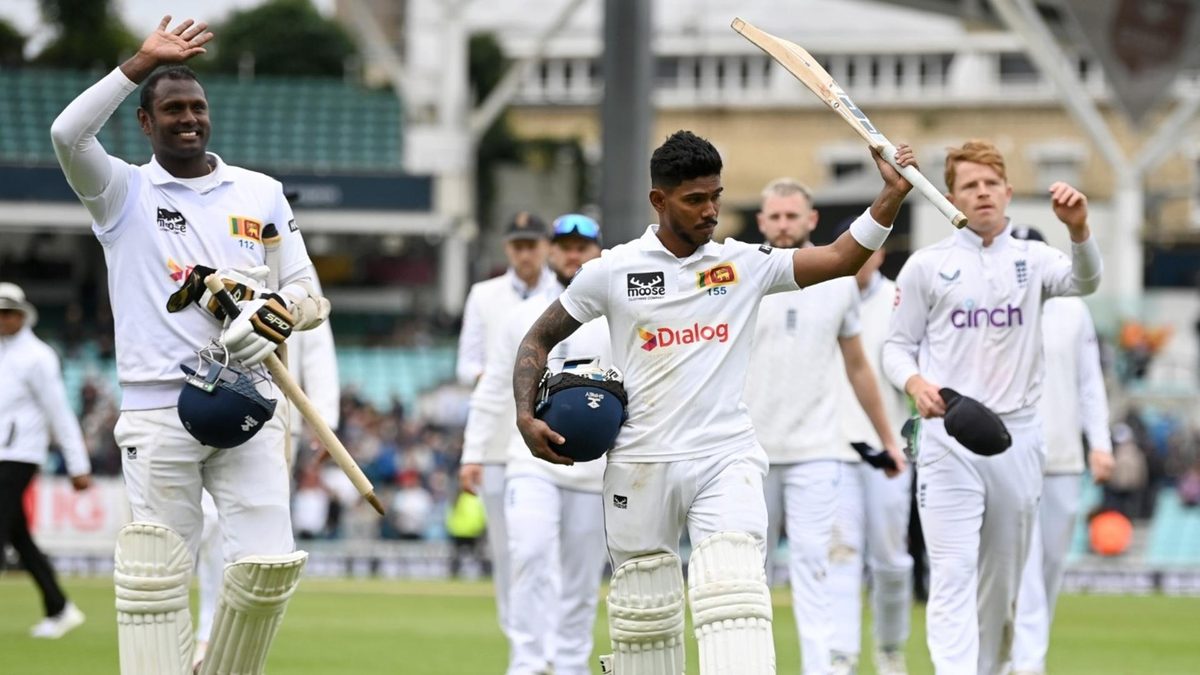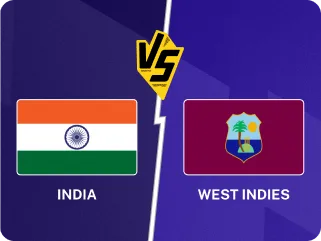
Phil Walker, Wisden Cricket Monthly editor-in-chief, welcomes Sri Lanka’s stirring victory at The Oval after a low-key Test summer featuring sparse crowds and hefty ticket prices.
Pathum Nissanka saves the summer. A knock of obscene elegance sees Sri Lanka to victory in the summer’s final Test. It’s a win so pure, and so beautiful for its sheer audacity, as could be begrudged by only the hardest hearts and most one-eyed fans.
The innings, 127 not out at better than a run a ball, in a fourth-innings chase under paving-slab skies, gives Sri Lanka the result they deserved. And it gives us, too, we merry band of long-suffering loyalists, a stirring result to get our teeth into.
An England summer whitewash would have felt pyrrhic to me. Pleasure would have been in short supply. Where’s the joy in flattening two hard-up nations that don’t play anywhere near enough cricket, against a backdrop of ambivalence? Why this obsession with ‘ruthlessness’?
Give me an upset any day. Give me Nissanka’s back-foot punch, Asitha Fernando’s pot-bellied away-swingers; give me Kamindu Mendis’ Oscar-worthy take on Kumar Sangakkara. Give me the urge to see what becomes of them. Give me a match to recall in years to come.
Here's a dichotomy. When England play lesser teams in Test cricket, we loftily crave a contest and lament the lack of one when they win. Yet when they don’t win – when the other lot play inspired backs-to-the-wall cricket – we put the boot in. Personally, I’d rather lean to the good things that sprang from The Oval than climb into a team that won five on the spin. Though, to be fair, they did make a right old horlicks of things on the second morning…
As far as I can see, there’s been little wrong with the cricket itself. England have blooded an astonishing mini-Gilchrist (Smith), entrusted the spinner’s job to a 20-year-old (Bashir), unearthed a giant (Hull), anointed the new king of Lord’s (Atkinson), and given Joe Root the space and time to break some more records.
But while Root’s second hundred of the Lord’s Test – his 34th, the most by an Englishman – was the most evocative sight of the summer, then the sparse crowd there to witness it would have to run it close.
Day-three crowds at Lord’s, Old Trafford and The Oval were all down this year, and if the ECB believe this is merely due to a low-key summer, they are kidding themselves. There are myriad factors at play. The health and prosperity of English cricket should be measured during the fallow years, not when Australia or India are here.
When Stokes took over in spring 2022, he was asked about the 16,000 tickets which remained available across days 1-4 of that year’s opener at Lord’s against New Zealand. “Ticket prices will have to be looked at properly,” he said. “What is cricket without its fans? What is sport without its fans? We want to be attracting people to come and watch us. But you have to look at how much it’s going to cost someone to get into the ground.”
Stuart Broad was similarly unequivocal: “I’m sure the prices will have to adjust to the cost of living,” he said. “If stadiums get emptier, people [cricket administrators] will have to adjust.”
Responses from administrators tend to boil down to shrugged acknowledgments about the rising costs of staging entertainment, ultra-tight profit margins, and the old supply-and-demand racket. But the reality is that the cost of a day at the cricket has been prohibitively expensive for too many people for far too long.
In 2020 we reported on a set of numbers from the Cricket Supporters’ Association (CSA) which revealed that only 45 per cent of the 2,500 fans they surveyed felt that cricket was good value for money compared to watching other live sport.
Following that, in August 2022, CSA updated its research to reveal that only four per cent of its respondents would be willing to spend more than £100 on a day of Test cricket, with the majority prepared to pay between £36-£50.
The killer stat was this: 74 per cent believed that reducing ticket prices for international cricket was critical if the game was to move forward. No one can say the warning signs weren’t there.
The related point is about value. At The Oval, around lunchtime on day one, we watched a pair of umpires staring at a contraption no bigger than an old Nokia, while a good number of the 27,000 punters wearily booed them. Sure, it was murky. That’s why you have four huge state-of-the-art floodlights.
That was day one. After the truncated second day – in which Chris Woakes had been forced to bowl a few mid-session off-breaks – Ben Duckett waved away the question. “That’s living in England and playing cricket in England, they’re the conditions. It’s very easy to sit there as a supporter and want to see more cricket, but if it does get really dark and more dangerous, we're the ones out there playing.” He really is incapable of shouldering arms.
In the old days, before floodlights and pink balls and day-night Tests, and two bouncers per over, and helmets, and the mission-creep of T20 and the existential threat to Test cricket’s future, cricketers in England scuttled off far too readily at the first sign of iffy light. But at least they had a case.
No longer. The pink ball under lights is the glaringly obvious answer. Replace the red ball at the umpire’s behest when the light gets to a certain point. Balls get replaced all the time these days anyway, and each one behaves uniquely. So get on with it.
Players are far too precious about this, and the game’s popularity too capricious, for the issue to be ignored. Those scenes at The Oval were an utter farce. If the last few weeks have told us anything, it’s that Test cricket’s unique grip on the country’s cricket-loving public should not be taken for granted.
This article features in the new issue of Wisden Cricket Monthly, available to pre-order now.








